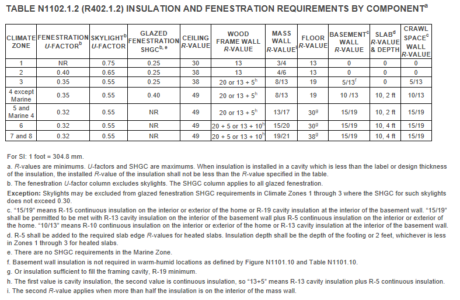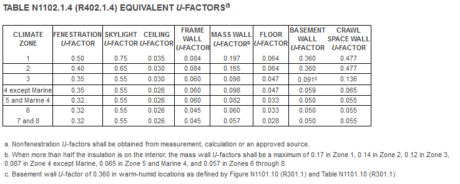Last week we started to talk about Residential Building Envelope Code Compliance and the 2015 IECC.
This week we are going to focus on the first compliance method, the method that is most commonly used as a default by builders, the prescriptive path.
The prescriptive path means following the specific written requirements of the code, such as installing insulation to meet the R-value requirements of IRC Table N1102.1.2 (IECC Table R402.1.2) or the U-Factor requirements of Table N1102.1.4 (IECC Table 402.1.4).
For example, if you are in Dallas, TX, that is Climate Zone 3, and your prescriptive insulation requirements are:
| Dallas, TX – Climate Zone 3 |
R-Value |
U-Factor |
| Ceiling |
38 |
0.030 |
| Wood Frame Wall |
20 or 13 + 5 ci |
0.060 |
| Mass Wall |
8/13 |
0.098 |
| Floor |
19 |
0.047 |
| Basement Wall |
5/13 |
0.091 |
|
Slab |
0 |
N/A |
|
Crawl Space Wall |
5/13 |
0.136 |




